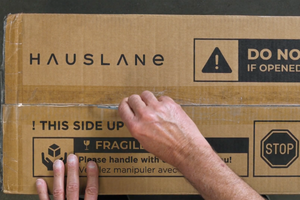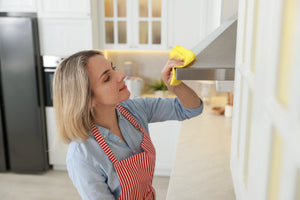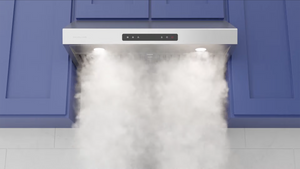How Your Home's Plumbing and Ventilation Work Together
Most people think of plumbing and ventilation as two separate systems. However, they’re more connected than you might realize.
In researching how homes function daily, we found that proper air circulation is essential to efficient water flow and vice versa.
Without the right ventilation, water pressure builds, pipes struggle, and water bills may spike. And without routine plumbing maintenance, even the best-designed ventilation systems can break down over time.


How Poor Ventilation Affects Home Plumbing
It might seem odd that air affects your pipes, but ventilation plays a central role in how well your drains and fixtures work.
Every time you flush a toilet or empty a sink, air must flow into the system to equalize pressure. If that ventilation is blocked by debris, bird nests, or a lack of proper venting, your plumbing can start to “choke.”
This can then cause plumbing issues such as:
Slow-Draining Fixtures
If water pools in your sinks, tubs, or showers longer than it should, the issue might not be a clog—it could be a blocked or improperly installed vent. Without enough airflow to equalize pressure, water struggles to exit efficiently.
Gurgling or Bubbling Sounds
Hearing strange noises after flushing the toilet or running a sink? That’s often a sign of trapped air struggling to escape due to poor ventilation.
These sounds come from air being forced through water seals or pipes that weren’t designed to carry it and may damage your plumbing system.
Sewer Gas Odors Indoors
Proper venting keeps harmful sewer gases out of your home by maintaining water seals in drain traps. When vent pipes are blocked or improperly designed, those gases can enter your living space, causing not just unpleasant smells but potential health concerns.
Toilets That Don’t Flush Properly
Ventilation plays a crucial role in toilet performance. Without sufficient airflow, toilets may not flush completely or even back up because the system can’t build enough water pressure to push waste through.
Frequent Dry P-Traps
The P-trap is supposed to hold water and block bad odors from the sewers, acting as a crucial part of preventive maintenance. Poor airflow can cause siphoning, where water is pulled out of the trap.
This dries it out and breaks the gas seal, allowing odors to escape, which then leads to water damage.
Without air to balance pressure, wastewater can’t move freely. That means your plumbing system is working harder than it should, increasing wear and tear.
5 Plumbing Maintenance Tips That Also Support Ventilation Systems
Ventilation issues often masquerade as plumbing problems. That’s why a smart plumbing maintenance routine should cover the entire system, not just what’s under the sink. This is especially important if you live in an older home.
Below are preventive plumbing maintenance tips that serve both systems:
Inspect Vent Stacks Regularly
Your home’s plumbing vent stack, usually located on the roof, releases gas from sewer lines and balances air pressure in the drain system. Over time, these vents become blocked by debris, leaves, ice, or even small animal nests.
Clogged vent stacks can lead to slow drains and sewer smells inside the home.
Make it a habit to visually inspect the vent openings at least once a year. If you can, check in the fall, when leaves and debris are more likely to accumulate.
If you’re not comfortable accessing the roof, a plumber can safely perform this inspection.
Confirm Every Drain Has a Trap and a Vent
A well-functioning drain should include a P-trap and a proper vent. The trap holds a water seal that blocks sewer gases, while the vent introduces air to keep water flowing.
As part of your preventive maintenance routine, check under sinks and behind fixtures to ensure traps are intact and properly connected. If you’ve recently added new appliances or fixtures, verify that they’ve been vented correctly and in compliance with local plumbing codes.
Watch for Patterns in Drain Behavior
Drainage problems in a single sink might mean a clog in the main water line. But if multiple fixtures have this problem, especially on different floors, it likely points to a systemic ventilation problem.
Keep track of when and where issues occur. Do they spike after storms or while other appliances run? Patterns like these help plumbers trace problems to their source, whether it’s a blocked vent line or a failing trap.
Schedule Annual Professional Inspections
Many ventilation-related plumbing issues are hidden in places most homeowners can’t or shouldn’t access.
So what do you do? Set up a regular plumbing maintenance schedule.
A professional plumber can use cameras to check for buildup inside pipes, verify that vent lines are clear, and identify early signs of corrosion or blockage. This helps prevent damage in your home and maintain proper airflow.
Build a Seasonal Plumbing Maintenance Checklist
Prevention is easier than repair. Creating a seasonal home plumbing maintenance checklist can help you avoid problems before they escalate.
In addition to inspecting pipes, valves, and faucets, your checklist should include:
-
Flushing out slow drains to prevent sediment buildup
-
Checking vent outlets for blockages
-
Inspecting attic or crawl space for moisture
-
Testing for sewer gas smells near floor drains or fixtures
Renovations? Here's Why You Must Coordinate Ventilation and Home Plumbing Systems
If you’re planning a bathroom or kitchen remodel and want new range hoods or sinks installed, you’ll want to think beyond the aesthetics.
Too often, ventilation is treated as an afterthought, which can lead to long-term performance issues. For instance, a poorly vented sink can drain slowly, while an unvented hood can trap moisture. Moisture buildup from poor airflow can eventually lead to mold or even a hidden leak behind walls.
In both cases, you’re left with a home that looks great but functions poorly.
To avoid costly repairs, here are some ventilation and plumbing tips to remember during renovations:
-
Map out fixture locations based on existing vent lines
-
Install range hoods and exhaust fans in kitchens and baths
-
Choose venting solutions that meet current building codes
When in doubt, consult professional plumbers and ventilation experts. A quick plumbing inspection already goes a long way!
Addressing Plumbing Problems: 3 Signs You Need A Professional Plumber
DIY fixes can only go so far. Here are three clear signs that it’s time to call a licensed plumber:
Widespread Slow Drainage
If you can't properly flush the toilet, the problem is likely isolated to that drain. But if you notice slow drainage with sinks, tubs, and toilets throughout the house, then it's time to call for help.
A clogged or partially blocked vent line restricts air from entering the system, which slows the flow of water. This creates vacuum-like pressure in the pipes and can even lead to water being sucked out of traps, leaving your home vulnerable to sewer gas.
Professional plumbers use specialized tools, such as inspection cameras and pressure gauges, to diagnose whether the issue is in the plumbing pipes, the vent system, or both.
Frequent Backups or Plumbing Leaks
A step further from the first sign is when your toilets overflow regularly or you notice water backing up into sinks, tubs, or floor drains. This one is a stronger indication that something is seriously wrong with your plumbing system.
These backups are often caused by major clogs in the main sewer line or significant venting failures. When pressure isn't balanced due to blocked vent pipes, wastewater has nowhere to go. So, it comes back up through the lowest available fixture. In multistory homes, this might even mean a toilet overflowing after someone showers upstairs.
Overflowing fixtures can lead to water damage, unsanitary conditions, and expensive plumbing repairs if left unchecked.
Persistent Sewer Odors or Mold Growth
If you notice a foul odor near sinks, tubs, or floor drains—even after cleaning—it could mean the vent system isn’t working correctly or that water has evaporated from the trap.
Poor ventilation can also create humid conditions in bathrooms or laundry rooms that allow mold and mildew to thrive. If you see mold growth on walls or ceilings near plumbing fixtures, the source may be a combination of leaking pipes and inadequate airflow.
Ventilation and Plumbing Maintenance Is the Key to a Balanced Home
Plumbing and ventilation might seem like separate systems, but they function best as a team. Water flow depends on air pressure. Air quality depends on controlled moisture and venting.
Ignoring one impacts the other. Make plumbing maintenance a routine part of your home care and be sure it includes ventilation checks. Don’t wait for warning signs. Schedule an inspection, seal up small issues, and keep both systems running smoothly year-round.








